Better, I think, without the Tiffen filter's rings, using only its retaining ring as the aperture mask.
Here is Alioth (M 1.75) near top left corner, ASI6200MC in APS-C ROI, gain 0, 30 second exposure. At 0.2 second exposure, Alioth produces about 31K ADU, so clipping at the equivalent of 4 second exposure. So, Alioth is 8 times or so brighter than the clip level.
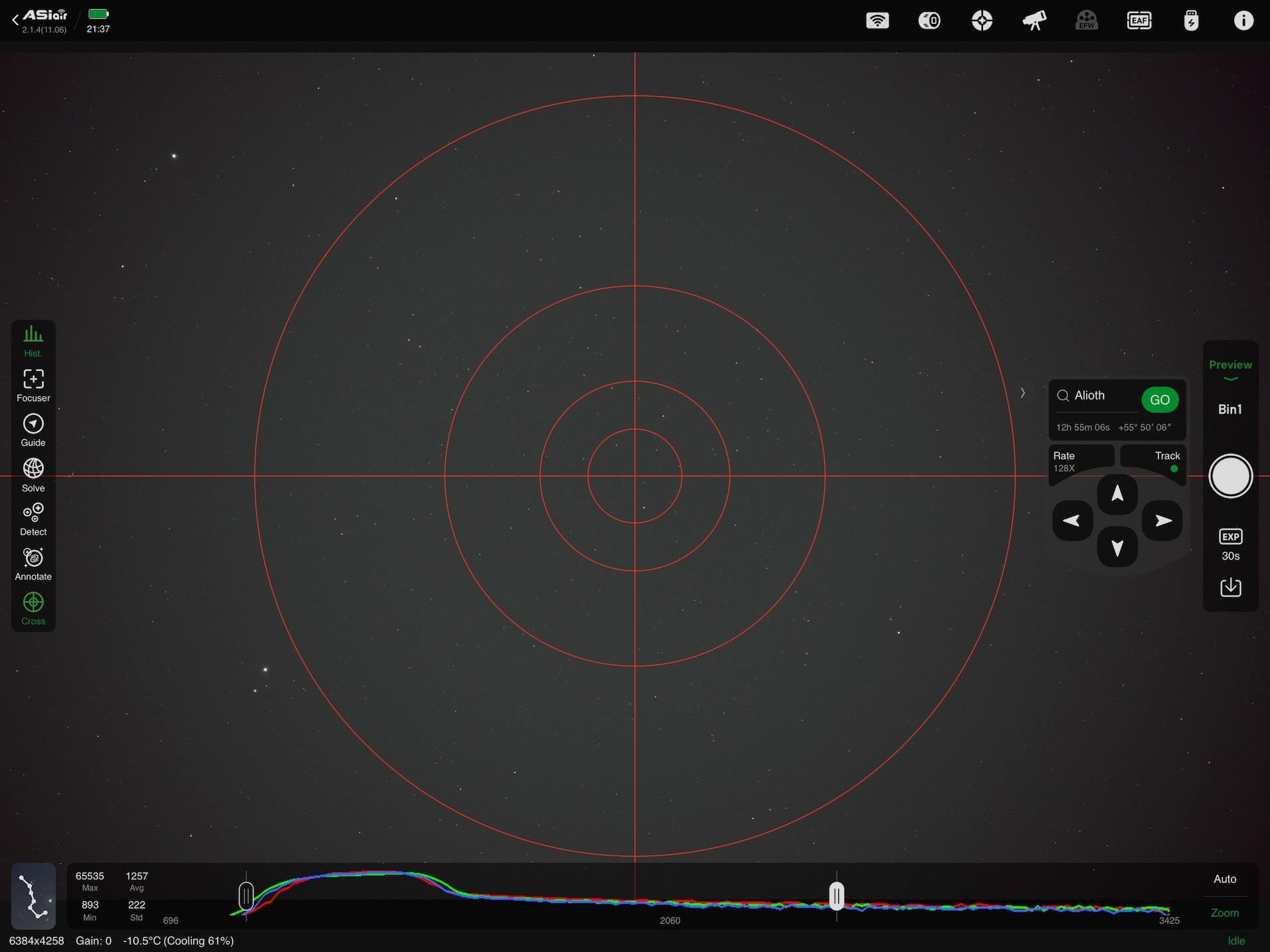
This next image uses a 55mm Tiffen (f/2.7) retaining ring, with the image blown up: the red target ring should give an idea of the magnification factor.
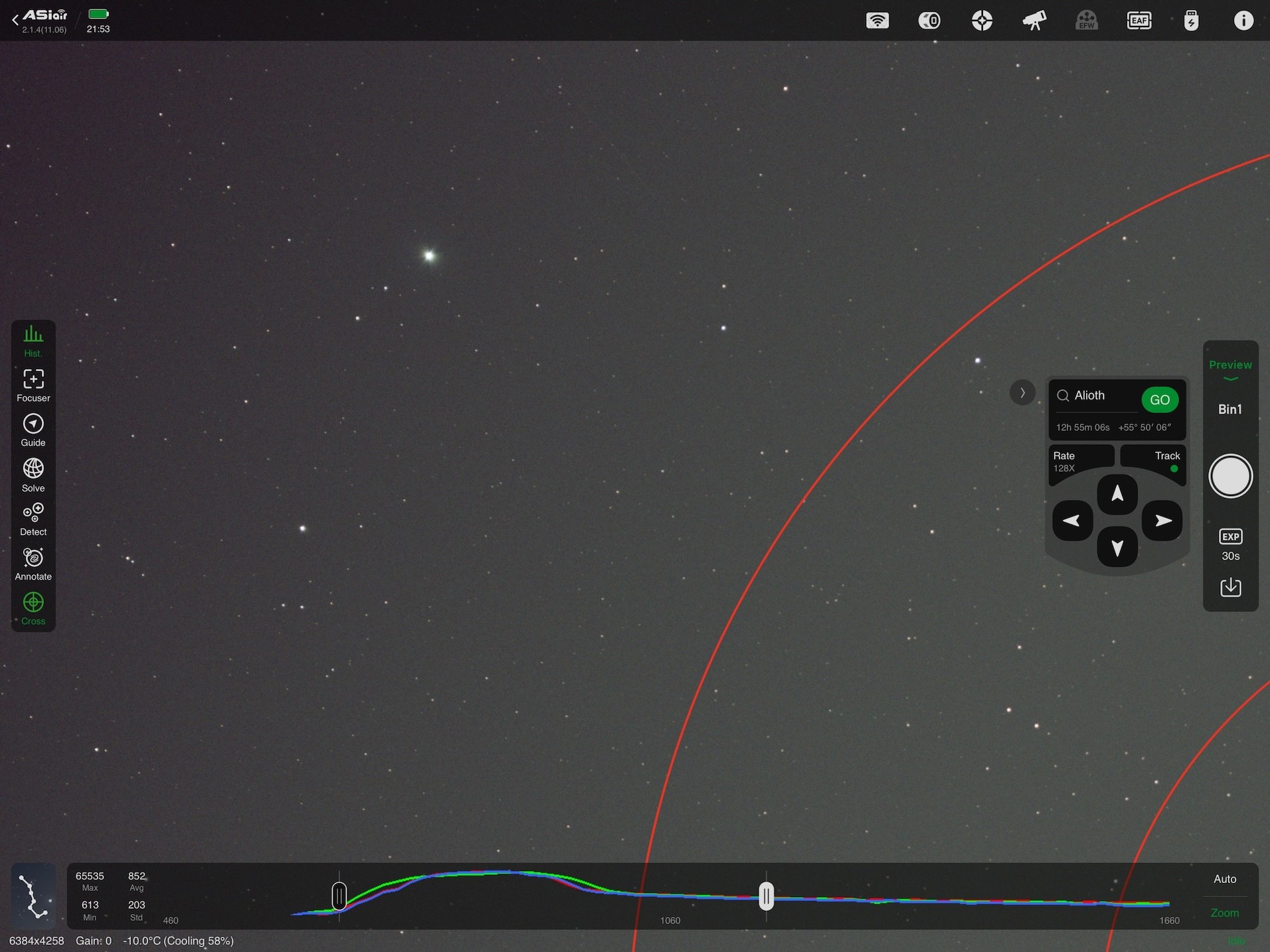
Next up is 49mm filter's retaining ring, f/3.1:
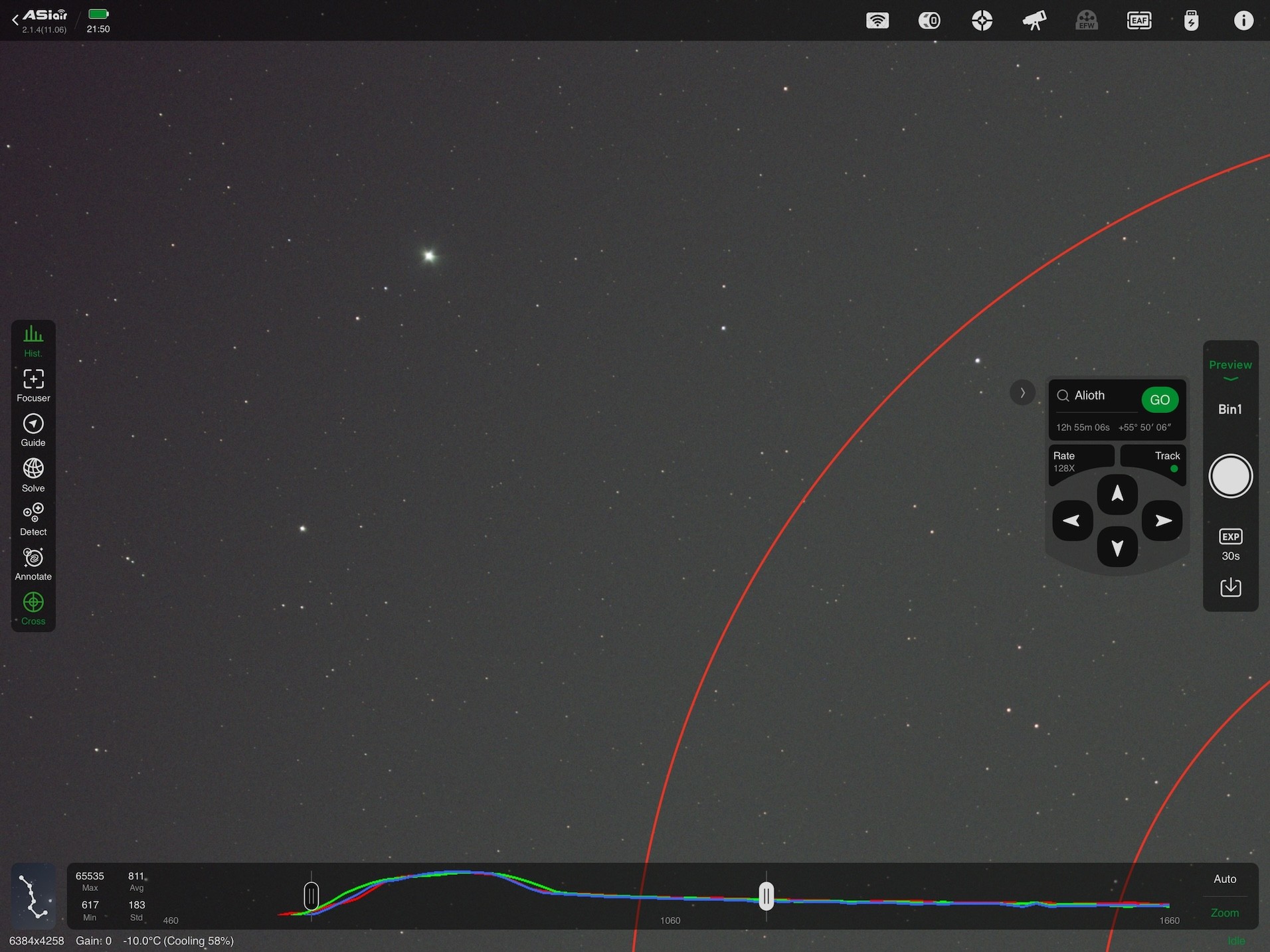
Finally, 39mm filter's retaining ring, f/4.0:
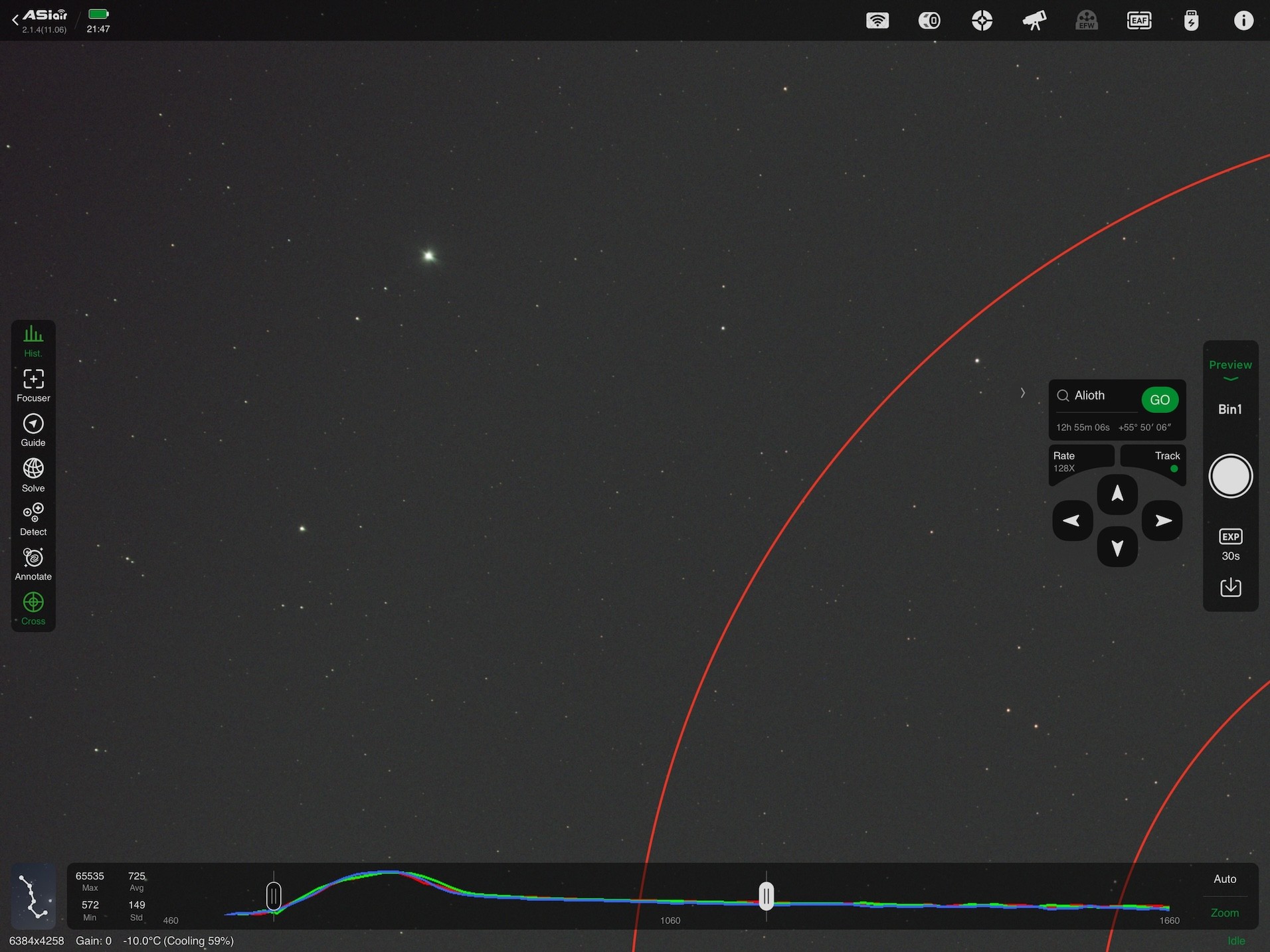
Here is the 55mm one, blown up even more:
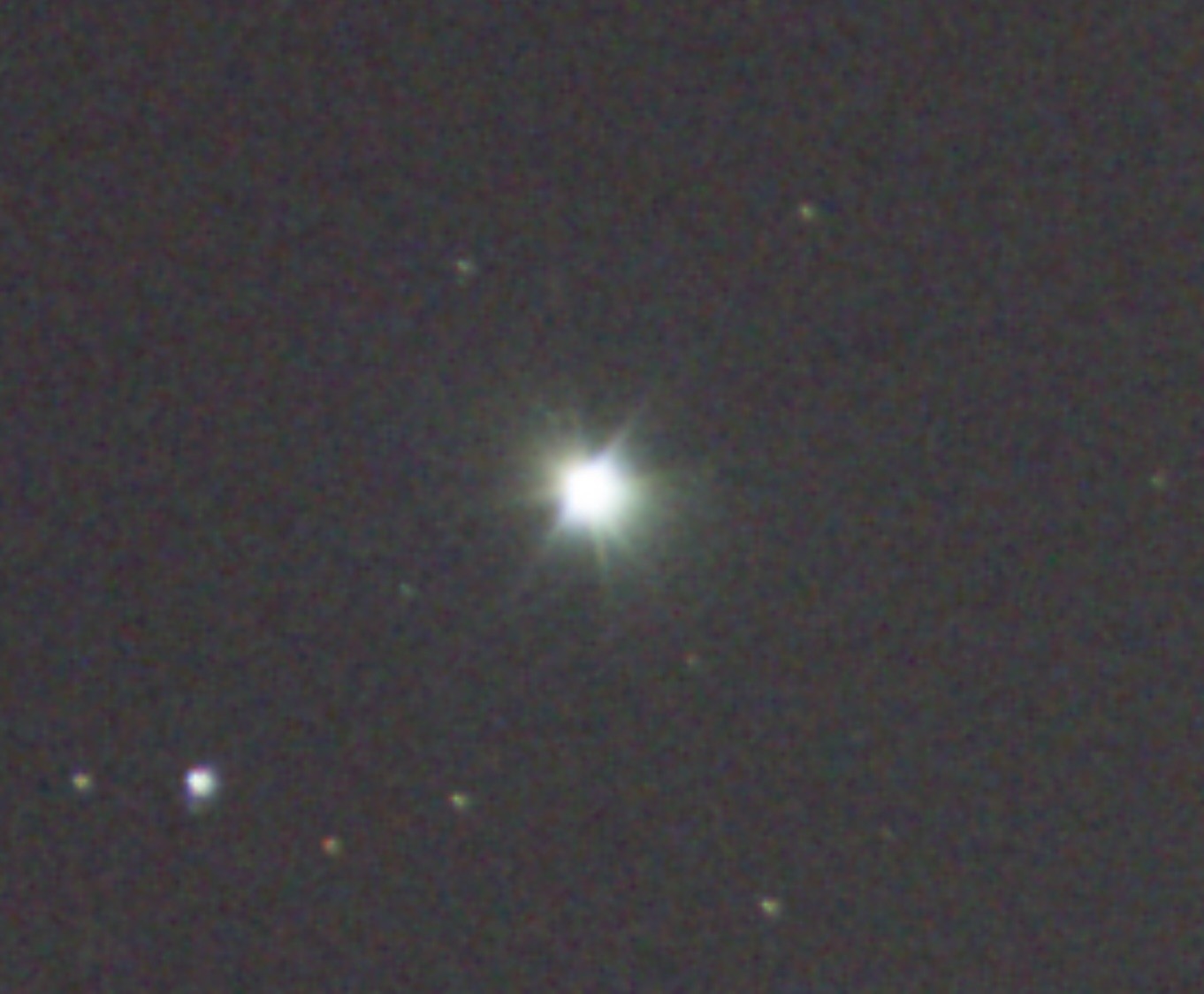
Notice that the iron cross is gone, the diffraction pattern is more random now (and smaller). I think what we are seeing now is the retaining ring not being a perfect circle. Still better than the step down threads without the retaining ring.
BTW, the 55mm (true diameter 49.7mm, f/2.7) looks surprisingly good. When I defocus it just slightly, I can see coma, but the above is carefully focused and the coma is dominated by the diffraction. Pretty much a 50mm astrograph, with 129mm (at least that is the plate solved focal length of my Rokinon). Quite acceptable stars, I think. I think I will use 55mm going forwards, insted of stopping it to f/4.0 (2 f-stops from full aperture).
The f/4.0 (39mm Tiffen) does look better to me (smaller stars and smaller diffraction, although the latter depends on how clean the particular aperture is). But I am not sure it is worth the 1 f-stop (twice the exposure time) difference,
BTW, I applied some metal super glue between the retaining ring and the step down ring it is threaded into. The retaining ring is so loose that Loctite, which was what I first tried, does not seem to work.
Chen